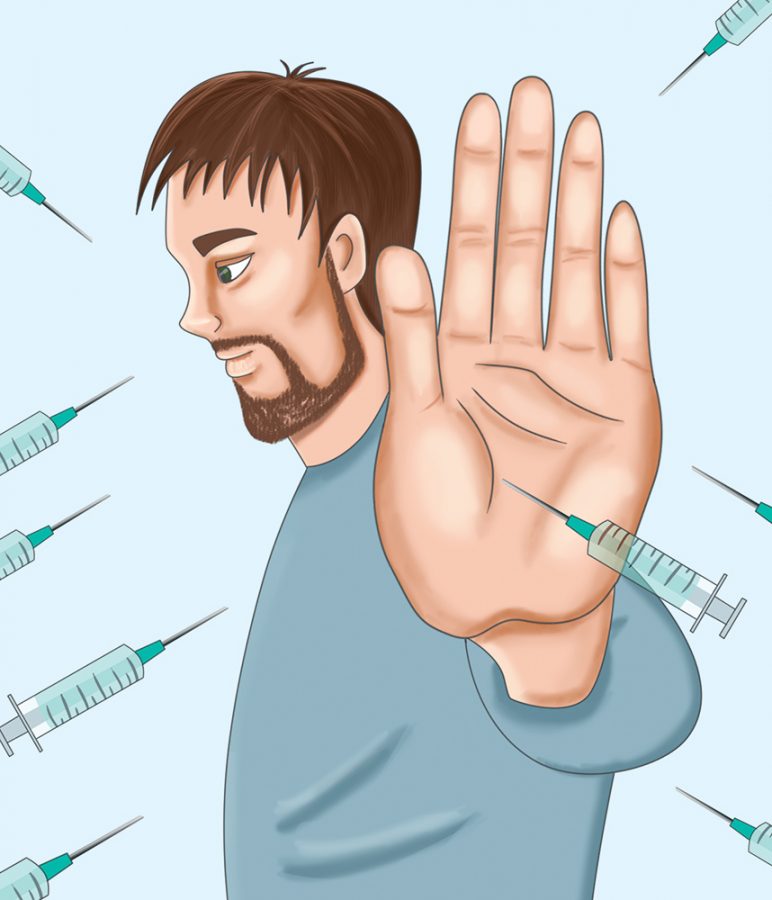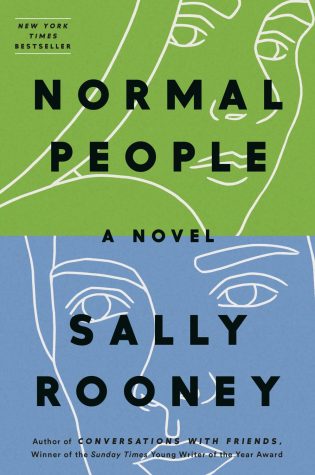Your turn guys, birth control not just for women
November 16, 2016
As a 23-year-old female who rebelliously popped her first Yaz birth control pill at age 14, unbeknownst to my parents, I feel like a contraceptive connoisseur.
I’ve become seasoned in the art of skipping periods by avoiding the week of little pink pills at the end of the month and getting refills on the fly, and on a darker note, combating depression and struggling with a low sex drive, weight gain and hives. This is the price women pay for safe sex.
Pregnancy protection always falls on the woman. I learned this quickly after becoming sexually active as a freshman in high school. I can’t count the number of times I awkwardly slipped back into class after a trip to the school nurse with a conspicuously clinical-looking white paper bag, bulging with a month’s supply of small white pills and LifeStyle condoms. This was just the beginning.
Being on birth control can be an uncomfortable, awkward and sometimes painful experience, but it is a precaution that women are expected to take. Sixty-two percent of women of reproductive age are currently taking a contraceptive, according to the Guttmacher Institute. A hormonal birth control method for men has been hinted at since the 70s, but 40 years later, we’re still waiting.
An article published in the Journal of Clinical Endocrinology & Metabolism on Oct. 27. revealed that such a development may be on the horizon.
A recent trial for a hormonal birth control shot for men was carried out from 2008 to 2012, which involved 320 men ages 18-45 years and their female partners, ages 18-38.
The men received intramuscular injections of 200 mg of norethisterone enanthate, a drug derived from a hormone used in the Depo-Provera shot for women, and 1000 mg of testosterone undecanoate, a synthetic version of testosterone, every eight weeks. This tricks the body into thinking it has enough testosterone so it doesn’t produce more, which in turn lowers sperm count, reports CNN.
When I first heard about the men’s birth control shot, I thought, “Finally! Your turn, guys.” However, the celebration was short-lived when I learned that the trials were discontinued due to concerns about side effects like acne, pain at the injection site, mood disorders and increased libido, according to the article. Twenty men dropped out of the study, reporting these 1,491 adverse effects and others, yet researchers confirmed that 39 percent of the symptoms were unrelated to the injections.
Even though the shot proved to be 96 percent effective in reducing the sperm count and preventing pregnancy in continuing users, the trial was scrapped prematurely and sent back to the drawing board, taking reproductive equality with it. I know it sucks, but welcome to the club guys: these are side effects that women have dealt with for over 50 years. We have been guinea pigs for contraceptives since the first trials were conducted in the 1950s, a product of the Sexual Revolution which granted women the ability to control their pregnancies. However, women also paid a steep price for these rights. In 1973, faulty line of Dalkon Shield IUD’s killed 18 women and gave hundreds of thousands infections that resulted in hysterectomies, according to the book America and the Pill by Elaine Tyler May.
Men’s aversion to taking birth control would be more understandable if the shot was as experimental as these early methods; however, that isn’t the case. The adverse effects, while uncomfortable, are relatively safe.
Men have expressed concerns about possible sterilization or a decrease in libido, but the research found the treatment to be completely reversible.
A valid counterargument is that when women take birth control, the negative effects balance out because they are rewarded with a prevented pregnancy. However, men will only experience negative effects firsthand, the benefits of their actions will be experienced by their partner.
Contraceptive methods have come a long way since the first birth control pill was manufactured from Mexican yams 50 years ago, however warning labels remain ominous. In addition to chest pains, nausea, prolonged periods, migraines and bodily weakness, contraceptives can also cause blood clots, heart attacks, strokes and toxic shock syndrome, a life-threatening bacterial infection, according to RxList.com. If a woman decides not to take the risk and gets pregnant because of a broken condom or a failed pull-out, the first question out of everyone’s mouth is, “why wasn’t she on the pill?” It’s the epitome of privilege that men are able to call off a study because of an acne outbreak, while women are burdened with the blame from an unplanned pregnancy. It takes two to make a baby and both parties need to be held equally responsible. Men currently have five major birth control options, according to the Planned Parenthood Federation of America, Inc., which include abstinence, condoms, outercourse, vasectomy and withdrawal. Abstinence and outercourse are unrealistic and the pull-out method is a gamble with a 78 percent effectiveness rating, according to the Center for Disease Control and Prevention. You can’t rely solely on men to always carry condoms, which are 82 percent effective, and most men won’t even consider getting a vasectomy.
Women, on the other hand, can have their tubes tied, have the NuvaRing, the Depo-Provera shot, IUD’s, the Nexplanon implant, the birth control patch, birth control pills, female condoms, the cervical cap, diaphragms and Plan B, the morning-after pill and even the birth control sponge (whatever that is).
The bottom line is that there needs to be more birth control methods for men. Women aren’t asking men to put themselves at any more risk than we have for decades. We get it, it sucks, but it’s a necessary evil unless you want an unplanned baby. How can you ask us to subject our bodies to treatments that you wouldn’t take yourselves?

















